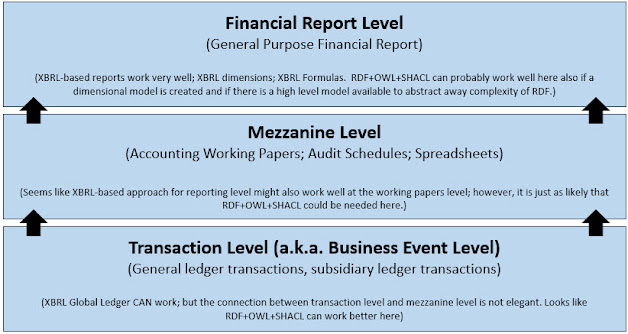Mezzanine Level of Digital Business Reporting
So there appears to be a need for what I am referring to as a "Mezzanine Level" in XBRL-based digital financial reporting. Financial reports people tend to get; the general purpose financial report. They also get the level of tractions which XBRL Global Ledger is supposed to handle; it is purpose built for transactional reporting.
When you look at the full "record to report" process; in between the transaction level and the financial report level you have accounting working papers and audit schedules that support the financial statement; those working papers and schedules tend to have some characteristics of financial reporting and some characteristics of transactions. Also, remember that not all information in a financial report comes from an accounting system. That information tends to originate within electronic spreadsheets and documents. I call this intermediate middle level the "Mezzanine Level" of the record to report process:
Over the years I have created many, many examples of XBRL-based digital financial reports. The best set of those examples and test cases is my PLATINUM Business Use Cases, Test Cases and Conformance Suite.Additional Information:
- W3C Data Catalog Vocabulary (DCAT) Version 3
- Engine B Audit Common Data Model
- How to use the Audit Common Data Model (Engine B, Video)
- Common Data Model Viewer
- What is record to report? (Blackline)
- Record to Report (Wikipedia)
- AICPA Dynamic Audit Solution





Comments
Post a Comment